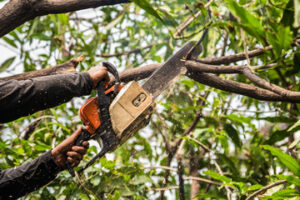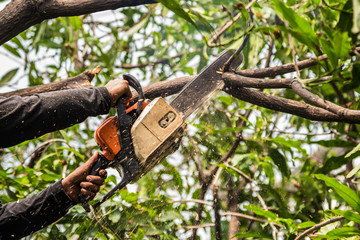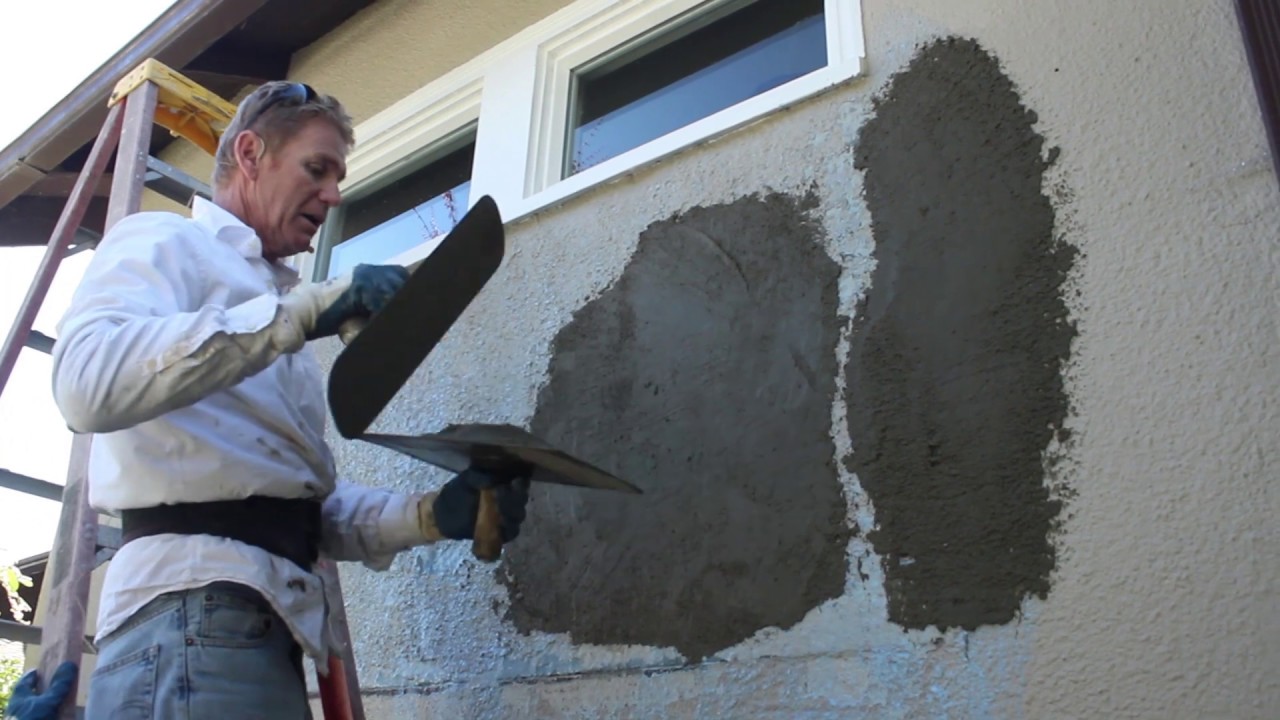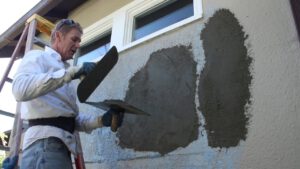Tree trimming is an important component of your landscape. It can have multiple benefits.
Proper pruning can boost plant growth, eliminate disease and pest problems, and reduce the risk of falling limbs. However, pruning can also damage trees if done incorrectly. Call Tino’s Tree Service for proper tree trimming.

Aesthetics
Aesthetically, trimming trees can help keep them looking beautiful. This is because it ensures that their growth is shaped the way you want them to. It can also improve the overall look of your garden or yard.
A well-trimmed tree adds value to your property and makes it a more pleasant place to spend time. This is why it’s important to keep them trimmed regularly. By doing so, you can make sure that your trees are not overgrown and that they don’t obstruct views or damage property. Additionally, a well-trimmed tree can help boost the growth of the plant and provide it with better access to nutrients and moisture.
There are a few important differences between pruning and trimming that you should be aware of. While they both involve the removal of excess branches, they have different purposes and should be conducted at different times.
Pruning is the process of removing dead or damaged branches, as well as those that are crossing or rubbing against each other. It also involves removing the branches that are growing inwards as these can inhibit the growth of the rest of the tree. Finally, pruning is also a great way to promote the health of the plant by removing branches that are dying or infected.
However, it is important to note that excessive pruning can be damaging to the health of the tree. Over-pruning can cause the tree to become weak and may even lead to its death. Therefore, it’s important to seek out the advice of a professional before performing any major pruning work on your trees.
Aesthetic pruning is more about the art of revealing a tree’s essence rather than the science of maintaining its health. The color and shape of the trunk, branches, leaves, flowers, and fruits; its position in the landscape; and the way it grips the ground — all of these factors play an essential role in the beauty and appeal of a tree.
Aesthetic pruning is typically done in spring or winter when the tree is dormant and less likely to be stressed by the process. It is also important to remember that trees are living things, and their beauty is part of what makes them so unique and special.
Health
Whether they add value to your home or enhance the overall appearance of your landscape, trees are an important part of any property. It’s essential to keep them healthy and aesthetically pleasing by regularly trimming their branches. This practice improves the health of your trees, making them safer for everyone on your property, and can help prevent costly damages in the future.
Trees that are overgrown and diseased are more likely to break off during a storm, leading to costly damages to your property. Additionally, overgrown branches are a breeding ground for pests that can spread diseases throughout the entire tree.
Regularly trimming your trees prevents this from happening, as it helps prevent any infections or diseases from spreading to other parts of the tree. A professional will examine your trees and identify any problems before they cause significant damage or become worse.
Proper pruning can also extend the lifespan of your trees by removing any dead or diseased limbs before they can rot and impact the rest of the tree’s health. It also restricts growth where it is undesirable and can even stimulate growth in areas that need it.
In addition, regularly removing unnecessary limbs can allow sunlight to reach more parts of the tree and encourage more leaves, flowers, and fruit production. It can also increase the amount of water and nutrients that can be absorbed by the root system, which can also lead to more vibrant greenery.
One common mistake people make when they trim their trees is to use the wrong techniques. One of the most dangerous is topping, which involves cutting off large portions of a tree’s crown and reducing them to stubs. This technique weakens the trunks of the tree and creates a breeding ground for mold and other pests. It’s important to hire a professional to trim your trees, as they have the proper training and experience to ensure they remain healthy.
Safety
Regular pruning will remove branches that could fall on your home or other structures during a storm. It will also eliminate limbs that are weakened by disease or insect damage. A trained tree trimming professional will possess the knowledge to identify and remove unhealthy limbs that pose a fall risk.
Unhealthy limbs can fall without warning and cause serious injury or property damage. Removing dead or dying branches can also help promote the health of your trees and landscape by allowing sunlight to reach lower branches and plants.
Trees that are trimmed regularly will also grow stronger cores, which will reduce the chance of breakage from wind or other weather events. This can add value to your property, as well as keep your family and guests safe.
Trimming can also prevent tripping hazards by removing low-hanging limbs and tangled branches. It can also improve the appearance of your home by removing unsightly branches and enhancing the view from your windows.
Before starting any trimming work, make sure that your tools are in good working condition. Check that your ladder is secured to a stable branch of the tree and can support your weight. Avoid using the bed of a truck for added height to your ladder and never stand on a weak limb that could fail under your weight.
You should always carry out a pre-start inspection of the area to look for hazards like broken limbs after a severe storm and electrical lines. Call off climbing or aerial access if the day’s forecast is wet, icy, or very windy. If you are working near or over a road, mark off the work area and use signs and cones to direct people and traffic away from your site.
Wear personal protective equipment that includes leather lineman’s gloves for electrical work and non-conductive hard hats. You should also wear eye and hearing protection. Choose close-fitting, long-sleeved clothing that will not get hung up on limbs, and wear safety footwear with a slip-resistant rubber sole. You should also be prepared to deal with a range of environmental conditions including extreme heat, cold, and wind.
Maintenance
Keeping your property well-maintained is an important part of owning a property. This includes trimming trees and shrubs to prevent them from growing too long, getting damaged, or becoming diseased. By having tree trimming services regularly performed, you can protect your property from issues that could end up costing you a lot of money in repairs and even potentially hurting your health.
Aesthetically, one of the most obvious benefits of having your trees trimmed is that it can help them look prettier. Removing unattractive branches and removing areas of growth that are taking away from the overall appearance of your trees can ensure they stay a beautiful and noticeable part of your landscaping for as long as you own your home or business.
The maintenance aspect of tree trimming is also beneficial because it can help your trees live longer. When a tree is unhealthy, it puts more strain on the trunk and branches, and this can lead to premature wear and tear that can cause the tree to fall over or damage your property. This is why it’s so important to hire a professional tree-trimming service that can keep your trees looking healthy and strong.
Another benefit of having your trees trimmed is that it will make them safer for you and your family to be around. Overgrown branches can be dangerous because they may start to hang over your home or get caught in power lines. By having the tree trimmed regularly, you can avoid any potential safety hazards and keep your family and guests safe from falling limbs.
Ultimately, the best reason to have your trees and shrubs trimmed is that it can protect your property and save you money in the long run. Keeping your trees and shrubs trimmed regularly can help them look better, live longer, and reduce the risk of costly property damage or injury to your family. Plus, it’s an easy way to boost your curb appeal and give your yard a more polished look. If you are interested in having your trees trimmed by professionals, contact us today for more information.


